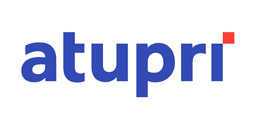The Federal Office of Public Health (FOPH) already announced an upcoming major hike in health insurance premiums more than a year ago. In 2023, the insurance premiums charged for mandatory health insurance already went up by 6.6 percent on average, compared to 2022. In 2024, we will see an even bigger price hike. The FOPH has announced an average premium hike of 8.7 percent.
Premium hikes vary between cantons
Cantons that are particularly hard hit, with health insurance premium hikes of 10 percent or more, include Ticino (10.5 percent increase), Zug (10.2 percent increase), and Appenzell Ausserrhoden (10.1 percent). Interestingly, all four of Switzerland’s fully French-speaking cantons (Geneva, Jura, Neuchâtel, and Vaud) and predominantly French-speaking Fribourg are among the ten cantons that will see average premium increases of 9 percent or more. “The premium hikes will be particularly painful for the Romandie because premiums in French-speaking Switzerland are already much higher than in German-speaking Switzerland,” says moneyland.ch CEO Benjamin Manz.
Premium hikes will be smallest in the cantons of Appenzell Innerrhoden and Basel-Stadt (both 6.5 percent), followed by Obwalden (6.7 percent). All other cantons will see average health insurance premiums increase by more than 7 percent.
The cost increases are fairly uniform across all three age groups. Both adults (age 26 on up) and young adults (18 to 26 years old) will see insurance premiums climb by 8.6 percent. The price hikes for children are somewhat lower, at 7.7 percent.
Those willing to take action can still save
It is true that residents do have to count on climbing health insurance premiums. “But residents who are willing to migrate to a cheaper health insurance company and use a cheaper health insurance model can, in many cases, still end up paying less than they did in 2023,” says moneyland.ch analyst Felix Oeschger.
In 2024, the average savings potential for adults (the difference between the average and the cheapest available premium) who are willing to use the cheapest insurance provider and model is around 65 francs per month, according to a moneyland.ch estimate. That is significantly higher than the average premium hike of 33.80 francs per month. The situation is similar for younger residents.
Examples of maximum potential savings
In addition to the average savings potential (65 francs per month), moneyland.ch also calculated the maximum potential savings – the difference between the highest and lowest available health insurance premiums – for two different profiles. The table below shows the maximum possible savings for an individual and a family with two children in Basel, Geneva, and Zurich. Calculations are based on the assumption that the lowest deductible is used (300 francs for adults, 0 francs for children).
Table: Maximum monthly savings potential in 2024
| |
Location |
Minimum premium |
Maximum premium |
Savings potential |
Individual
Year of birth: 1980 |
Basel |
CHF 510.10 |
CHF 726.35 |
CHF 216.25 |
| Geneva |
CHF 507.30 |
CHF 895.90 |
CHF 388.60 |
| Zurich |
CHF 444.60 |
CHF 663 |
CHF 218.40 |
Family
Years of birth:
1980, 1980, 2007, 2003 |
Basel |
CHF 1569.60 |
CHF 2283.90 |
CHF 714.30 |
| Geneva |
CHF 1580.40 |
CHF 2687.70 |
CHF 1107.30 |
| Zurich |
CHF 1367.20 |
CHF 2055.20 |
CHF 688 |
Example: A single adult in Zurich who uses the most expensive mandatory health insurance could save around 218 francs per month or 2621 francs per year by moving to the cheapest insurance provider and the most affordable insurance model. The family of four could save 688 francs per month, or 8256 francs per year. And these potential savings do not even account for the possibility of changing to a higher deductible.
Additional savings potential by using the right deductible
In many cases, optimizing your deductible model can result in lower insurance premiums. The rule of thumb for choosing a deductible: “Adult residents with healthcare expenses of less than 1900 francs per year will save money by using the highest possible deductible,” explains Oeschger. Residents with higher healthcare expenses will generally save money by using the lowest possible deductible (300 francs). All other deductible options never make financial sense in the current system.
You can find more tips in the guide to saving on mandatory health insurance.
Methodology
The calculations of maximum potential savings are made based on the assumption that the insured people use the lowest available deductible (300 francs for adults). All available insurance models are accounted for. Accident coverage is excluded from premium calculations, except for the two children in the family profile.

 Deal of the Day
Deal of the Day 




